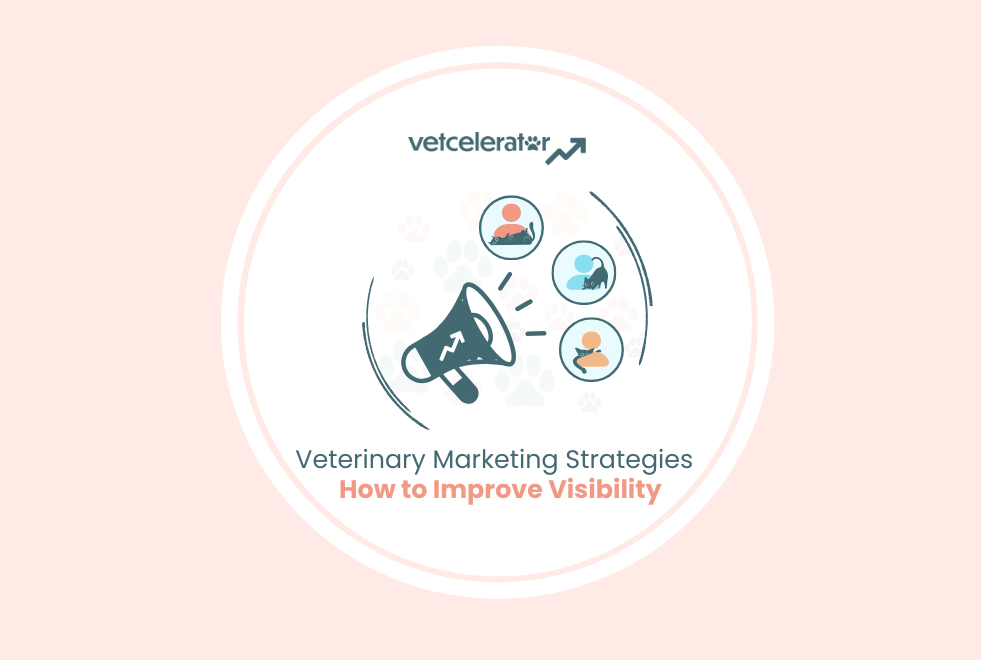
Below is part 4 of a multi-part series in what we will call multi-dimensional marketing, or otherwise stated, the process of looking at your overall approach to marketing through a variety of lenses. In doing so, we hope to showcase the overall concept of marketing, which is often undervalued as simply advertising.
It is Vetcelerator’s belief that marketing is more than branding and advertising; it is a philosophy to solve problems. It is creating, communicating, and capturing value. In this lens, managing phone calls is marketing as much as the name of your company.
The table of contents for what’s to come is as follows:
-
- Lessons in Naming
- How do Brands Work?
- Online Reviews and Outcomes
- “Social Skills” and Cooperative Marketing
- Revisiting Competition and Purchase Consideration
A Familiar Lesson in Brand Awareness
Visualize the cereal aisle in your grocery store or the grocery store from your childhood. When you visualize this aisle, what cereal boxes do you see? Where are the brands that you recall in that aisle? Where do you remember them being on the shelf – high, middle, or low? Are they near the end of the aisle or in the middle?
When we think of marketing for awareness and cooperative marketing, there isn’t a better venue than the grocery store. Hundreds of brands interact, compete, and cooperate with each other for purchase consideration. A grocery store is a physical space, so it even represents a manifestation of a product instead of an idea of a product. It’s tangible. Everything is right in front of you.
Taking the grocery store down to just the cereal aisle, let’s look at what’s going on.
What is the profitability of a grocery store?
Pretty low. Around 1-3% historically, but there are some outliers that are able to generate above-average profits.
What is the profitability of a cereal manufacturer?
Pretty good. Around 10-15% for a well-run company historically
This doesn’t mean that every grocery store should shutter their doors and become a cereal manufacturer. What it does mean is that grocery stores need to consider their competitive position and find other ways to compete.
Slotting Fees: The Origins of Cooperative Marketing
Since the 1980s, one way that grocery stores used their position to narrow the gap was to consider that their physical space was a venue for marketing. If consumers have to know a brand exists in order for it to be in purchase consideration, grocery stores could drive brand awareness by placing products on a particular portion of the shelf, e.g., at eye level, or employing other brand displays to capture attention. In return for this awareness, grocery stores collected “slotting fees” from manufacturers. To learn more about the economics of this, here’s a great article from 2006 from the Department of Justice
Slotting fees are one of the earliest forms of cooperative marketing, and they still exist today! However, powerhouse companies like Wal-Mart famously did away with this practice for their locations in lieu of collecting a lower wholesale price.
Modern Retail, Vendors, and Digital Social Media Marketing
Fast forward to today, and Wal-Mart is increasingly innovative and profitable with respect to cooperative marketing. Brands can now advertise on Wal-Mart’s digital store as well through Wal-Mart Connect. In 2023, Wal-Mart Connect generated nearly $3 billion in revenue from these practices.
Why does any of this matter? Well, this is one example inside of a much bigger idea: working with your vendors or other complementors to attract shared customers. By doing so, veterinary practices and pet care brands can decrease costs, increase revenue, and increase compliance through this form of cooperative marketing.
But before we get there, let’s explore the other models and share some examples inside of veterinary care and pet care facilities.
What are the Marketing Models in Veterinary Care?
Option 1: Push Demand – Clinic as the Sales Engine
“Convenient once-daily dosing can help improve client compliance.”
Many practices are familiar with this model. Sales forces and promotional items are shared with the practice, who purchase from the manufacturer and sell/administer to patients. The downside is that the end user (client) learns about the manufacturer’s item through the veterinary practice. The end user does not have brand awareness of the item until they arrive in the practice.
Option 2: Pull Demand – Consumer-Led Awareness
“Ask your vet or pet store!”
This model is common for items such as parasiticides or food. Vendors promote the item directly to the consumer who purchases it from the practice. A positive difference is that the customers are made aware of the product outside the walls of the practice, which can be reinforced during a visit.
The risk to the practice is that the customer doesn’t “ask their vet” and instead purchases through a third-party online store, as awareness was generated for the item, not the purchase location. Only about 50% of customers know their vet has an online store. The downside for the manufacturer vendor is localizing the content. They have to make brand awareness happen on a national level for a particular product, so the local support through a veterinary location doesn’t happen in conjunction with the national campaign to drive awareness.
Interlude: Does Credibility Matter in Local Vets vs. Global Brands?
Who has more credibility in the eyes of pet parents in Waterville, Maine: Dr. Matthew Townsend or Merck Animal Health?
Dr. Matthew Townsend has been practicing in the county for nearly 30 years. He has opened multiple practices during his time in Waterville. His current clinic is called Dirigo Veterinary Care, Dirigo being that Maine state motto. Dr. Townsend has run for political office in the area and is active in the region’s Humane Society and Veterinary Board. To read more about his practice, read Authenticity in Action.
According to Merck’s corporate fact sheet, “With $5.6 billion in sales in 2023, Merck Animal Health is one of the fastest growing animal health companies. Merck Animal Health has commercial offices in more than 50 countries, with products available in some 150 markets.”
Certainly, Merck serves more pet parents both worldwide and in Waterville than Dr. Townsend, but the answer is still the up-start Dr. Townsend. This is intuitive and important. Option 3 will explain why this matters for both parties.
Cooperative Marketing in Vet Care Through Vendor Partnerships
Option 3: Cooperative Marketing – The Power of Partnership
By promoting the product through the practice’s marketing channels, the manufacturer and the practice benefit through a shared initiative. There are so many positives to this approach.
- Hyper Local Content: Advertising done locally is more relevant, less expensive, and more effective.
- Authenticity / Credibility: Manufacturer benefits from the credibility of the vet who would have “promoted” the product anyway (but likely not externally).
- Alignment of Expertise: Manufacturers have more promotional expertise than local vet practices and a higher budget to promote.
- Supports Clinic Growth and Pet Parent Compliance: Goal of promotion is to increase care compliance, which benefits all parties..
While Option #3 seems like a very attractive option, it is the least likely to be used or not fully expressed because of coordination and scale. So, how can veterinary and pet care brands take advantage of this option?
How to Use Co-Op Marketing in Your Veterinary Clinic or Pet Care Facility
Marketing doesn’t mean advertising; it means communicating and capturing value. What are ways that vet clinics and pet care brands can perform using cooperative marketing for customer engagement?
In-Clinic Brochures
most frequent form of cooperative marketing is in-clinic brochures. You may see “The Benefits of Wellness Bloodwork” or “3 Ways to Protect from Bad Breath” inside of colorfully designed leaflets at a veterinary practice. These leaflets are intended to inform and help with marketing for the practice. This content is harder to localize for vendors, but you may see cases where vendors in vendor partnerships cover the printing in order to have the clinic’s logo on the content alongside the manufacturer’s logo. Being a physical medium, these marketing activities are limited by their tangibility.
Email Campaigns
Using the veterinary practice email, manufacturers have found cooperative ways to support practices in their marketing to shared customers via email. Email campaigns have found their niche in the marketplace in reminder protocols and compliance initiatives. Limited-time offers can be paired with an active customer list sliced to target relevant audiences. Using the practice email system allows more localization and a wider audience because we’ve moved outside of the physical realm. Email marketing is a core marketing activity when done right, but it’s worth acknowledging the potential for oversaturation and low engagement from the audience.
Social Media or “Social Skills”
A more nascent field of cooperative marketing, social media marketing has many benefits that the other two forms lack. (For more on social media benefits and tips, read Social Media: Expanding Your Clinic’s Reach.)
- Social media pages can be used to target not only existing customers and followers of a practice but also to run paid advertisements to target potential new customers using geofencing, audience groups, and “look-a-likes” leveraging the primary data that the clinic knows about their customers to find others.
- More forms of content expression are available in social media marketing, whether that is video and sliding carousels or the ability to facilitate a dialogue in the comments or reshare to new networks.
Localizing messaging, content, audiences, branding, and media purchases is time-consuming work, especially as all ad platforms have different interfaces, acceptance criteria, and targeting options. Meta, Google Display Network, LinkedIn, and X are all different. On top of that, for a campaign to work across 200 different practices would mean 200 different profile setups, localizations, audiences, and color palettes and to match clinic branding.
Vetcelerator’s Scalable Approach to Cooperative Marketing
At Vecelerator, we’ve worked to address the challenge of scale to build a cooperative social media marketing distribution platform unique to vet and pet businesses. This product development matched our mission to increase transparency, efficiency, and understanding of marketing activities while reducing the overall cost to do so. Cost, in this case, is monetary, but also the cost of time.
With Vetcelerator Socials, clinics promote their own content or localized manufacturer content for items/services that they provide in the clinic to increase brand awareness, visits, and compliance. We regularly post organically through their social media and have paid campaigns that can be sponsored by the clinic for their own benefit or with brands to support cooperative campaigns.
Conclusion
Veterinary practices and pet care brands can no longer rely solely on traditional methods to drive growth. Embracing cooperative marketing through vendor partnerships and strategic use of social media marketing not only boosts brand awareness but also deepens customer engagement and improves compliance. By collaborating with manufacturers and leveraging tools like Vetcelerator Socials, you can communicate your value more effectively and scale your impact locally.
To learn more about how Vetcelerator can help your veterinary practice or pet care brand drive customer engagement, contact us today.




